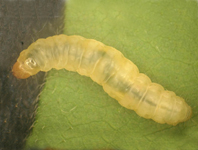Abstract
Fishes of the genus Cottus have long been taxonomically challenging because of morphological similarities among species and their tendency to hybridize, and a number of undescribed species may remain in this genus. We used a combination of genetic and morphological methods to delineate and describe Cottus schitsuumsh, Cedar Sculpin, a new species, from the upper Columbia River basin, Idaho-Montana, USA. Although historically confused with the Shorthead Sculpin (C. confusus), the genetic distance between C. schitsuumsh and C. confusus (4.84–6.29%) suggests these species are distant relatives. Moreover, the two species can be differentiated on the basis of lateral-line pores on the caudal peduncle, head width, and interpelvic width. Cottus schitsuumsh is also distinct from all other Cottus in this region in having a single small, skin-covered, preopercular spine. Haplotypes of mtDNA cytochrome oxidase c subunit 1 of C. schitsuumsh differed from all other members of the genus at three positions, had interspecific genetic distances typical for congeneric fishes (1.61–2.74% to nearest neighbors), and were monophyletic in maximum-likelihood trees. Microsatellite analyses confirmed these taxonomic groupings for species potentially sympatric with C. schitsuumsh and that fish used in morphological comparisons were unlikely to be introgressed. Its irregular distribution, in the Spokane River basin in Idaho and portions of the Clark Fork River basin in Montana, may have resulted from human-assisted translocation.

